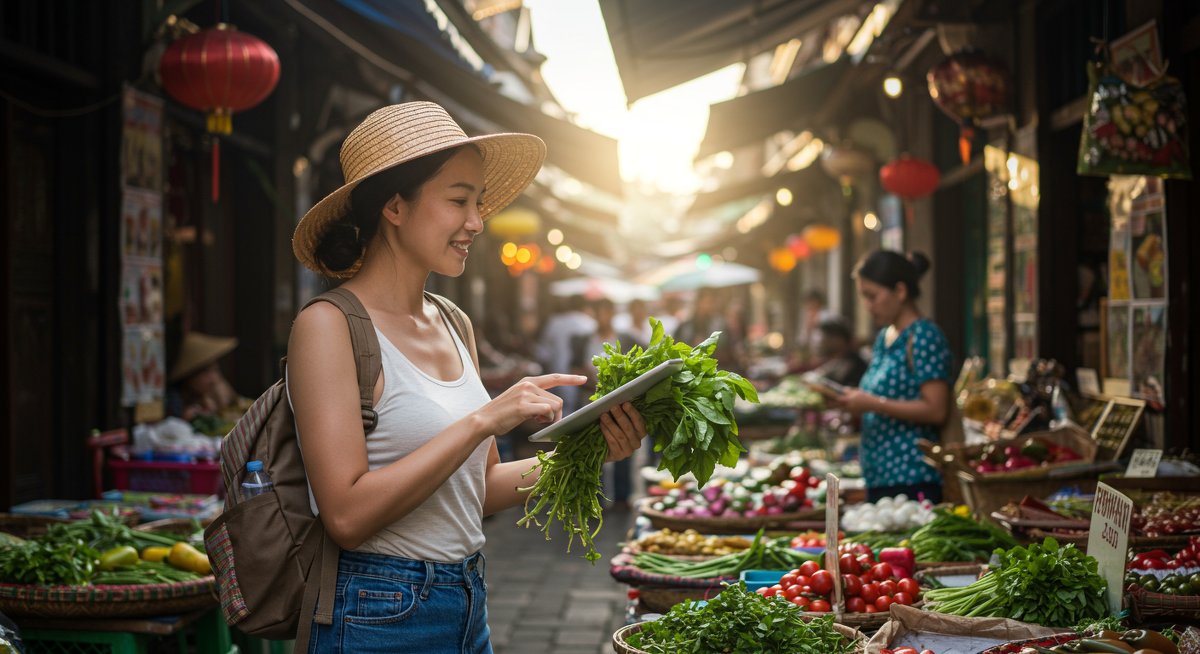
Why this matters for new travelers
So, you're dreaming of exploring the vibrant cultures, breathtaking landscapes, and delicious food of Asia? Fantastic! Asia offers an unparalleled travel experience, and it’s also a region where you can make your travel budget stretch incredibly far. This guide is designed to be your complete companion, providing actionable strategies and insider tips to help you explore Asia on a budget in 2025. Whether you're a first-time traveller or a seasoned backpacker, the goal is simple: to maximise your experiences without emptying your wallet. Let's be honest, the cost of travel can be a barrier. This guide will help you understand how to make your travel dreams a reality.
Getting started: What you need to know
Before you even book your flight, a bit of pre-planning can save you a significant amount of money. First, consider the time of year. Shoulder seasons (spring and fall) often offer the best combination of good weather and lower prices. Avoid peak seasons like the summer months and major holidays, when prices for flights and accommodation skyrocket. Research the visa requirements for your nationality well in advance, as this can impact your budget and travel timeline. Make sure your passport is valid for at least six months beyond your planned return date. It's also wise to get travel insurance that covers medical emergencies, trip cancellations, and lost belongings. Finally, start monitoring flight prices and hotel rates several months before your trip.
Next, consider your destination. Southeast Asia (Thailand, Vietnam, Cambodia, Laos) generally offers the best value for budget travellers, with low costs for food, accommodation, and transportation. Countries like Japan and South Korea can be more expensive, but even in these destinations, careful planning and smart choices can help you stay within your budget. Start with a realistic budget. Consider how long you plan to travel, your preferred style of travel (hostels vs. hotels, street food vs. restaurants), and your must-do activities. Estimate your daily expenses for accommodation, food, transportation, activities, and incidentals. A good starting point is $30-$50 per day in Southeast Asia, $50-$80 in other parts of Asia, but this varies greatly depending on your travel style and the specific countries you visit. Knowing this allows you to get the best experience.
Step-by-step solution
Step 1: Flights - The foundation of your budget
Flights are often the most significant expense. Here's how to find the cheapest flights to Asia:
- Be Flexible: Flexibility is your superpower. Be open to traveling on different dates and from different airports. Use flight comparison websites like Aviasales to compare prices across multiple airlines. Consider flying into a major hub like Bangkok or Singapore and then taking budget airlines to your final destinations.
- Book in Advance (But Not Too Early): Booking too far in advance might not always get you the best deals. Aim to book your flights 2-6 months before your trip. Monitor prices regularly, and be ready to pounce when you see a good deal.
- Consider Budget Airlines: Airlines like AirAsia, Scoot, and Jetstar offer incredibly cheap flights within Asia. Be aware of extra fees for baggage, meals, and seat selection. Factor these into your overall cost comparison. Consider using flight comparison websites like Aviasales to help find these deals.
Step 2: Accommodation - Where you rest your head
Accommodation costs can vary widely. Here's how to find affordable places to stay:
- Embrace Hostels: Hostels are the ultimate budget traveller's friend. They offer dorm beds, private rooms, and often have communal kitchens, allowing you to save money on food. Websites like Hostelworld are perfect for finding and booking hostels.
- Guesthouses and Homestays: In many parts of Asia, guesthouses and homestays offer a more local experience and are often cheaper than hotels. Look for these options on Booking.com or Agoda.
- Off-Season Travel: Prices drop significantly during the shoulder season and off-season. Consider traveling during these times to save on accommodation.
Step 3: Food - Fuelling your adventure
Food in Asia can be incredibly cheap and delicious. Here's how to eat well without overspending:
- Eat Street Food: Embrace street food! It's authentic, flavorful, and incredibly affordable. Be adventurous and try local specialties.
- Shop at Local Markets: Buy groceries at local markets and cook your meals at your hostel or guesthouse. This is a great way to save money and experience local culture.
- Avoid Tourist Traps: Restaurants in tourist areas tend to be more expensive. Venture away from the main streets and explore local eateries.
Step 4: Activities & transportation - Exploring the region
Transportation and activities require some planning to stay within budget.
- Use Public Transport: Public transportation (buses, trains, subways) is usually much cheaper than taxis. In many cities, you can use ride-sharing apps (like Grab) to get around affordably.
- Walk and Cycle: Walking is free, and cycling is often a cheap and enjoyable way to explore. Rent a bicycle to explore smaller towns and cities.
- Free Activities: Take advantage of free activities like visiting temples, hiking, and exploring local markets.
Your first $100: What to expect
Let's break down how your first $100 might be spent in Southeast Asia. This is a general example, and costs will vary based on your destination and travel style.
- Accommodation: A dorm bed in a hostel for 2-3 nights ($10-$15).
- Food: Street food for 3 days ($15-$20). You could enjoy multiple meals a day, snacks, and plenty of fresh fruit.
- Transportation: Local bus or train tickets ($10-$15). You could take a few short trips within a city or travel between nearby towns.
- Activities: Entry to a temple or a museum ($5-$10).
- Incidentals: Small purchases, snacks, or a coffee ($10-$20).
- Remaining: This leaves you with some extra cash for unexpected costs or a little more luxury, perhaps a private room one night.
Example 1: Imagine you arrive in Chiang Mai, Thailand, with $100 in your pocket. You find a hostel for $7 a night, giving you nearly a week's worth of accommodation. You eat delicious street food for an average of $5 a day. This leaves you with more than $60 to spend on activities like visiting temples, taking a cooking class, or exploring the surrounding countryside by bicycle. That is a great travel experience.
Example 2: You land in Hanoi, Vietnam, with $100. You find a guesthouse for $12 a night. You eat at local "pho" restaurants averaging $3 per meal. You take a walking tour of the Old Quarter, costing only a few dollars, and enjoy the evening water puppet show, costing around $10. You still have money left over for souvenirs and transportation. It can be done!
Common beginner mistakes to avoid
- Overspending on Flights: Don't book the first flight you see. Compare prices from multiple airlines and consider alternative airports.
- Eating at Tourist Traps: Avoid restaurants in highly touristy areas, as they tend to be overpriced.
- Ignoring Transportation Costs: Transportation can quickly eat into your budget. Research local transportation options before you arrive.
- Not Budgeting for Incidentals: Always have a buffer for unexpected expenses, souvenirs, or a little extra fun.

International travel considerations
Asia has many different cultural and practical considerations, so take some time before you travel to research your destination.
- Visa Requirements: Check visa requirements for your nationality. Some countries offer visa-free entry for certain periods, while others require a visa in advance or on arrival. Be sure to give yourself ample time to acquire visas.
- Vaccinations and Health: Consult your doctor about recommended vaccinations and health precautions for your destination. Pack a basic first-aid kit and any necessary medications.
- Cultural Sensitivity: Respect local customs and traditions. Dress modestly when visiting temples, and be aware of local etiquette.
- Bargaining: Bargaining is common in many Asian markets. Be polite, and don't be afraid to negotiate.
Building your travel knowledge
Here are some great ways to improve your budget travel knowledge:
- Read Blogs and Forums: Read travel blogs and forums to get tips and inspiration from other budget travellers.
- Join Facebook Groups: Join Facebook groups dedicated to budget travel in Asia. You can ask questions, get advice, and connect with other travellers.
- Learn Basic Phrases: Learning a few basic phrases in the local language can go a long way. It shows respect and can help you negotiate prices.
- Use Travel Apps: Download travel apps like Maps.me (for offline maps), Google Translate, and XE Currency to help you navigate and manage your budget.
Next steps in your travel journey
So, are you ready to explore Asia without breaking the bank? Remember, budget travel is all about making smart choices and being open to new experiences. Start by planning your trip, researching your destinations, and booking your flights and accommodation. Then, embrace street food, use public transportation, and take advantage of free activities. And most importantly, be flexible, have fun, and enjoy the incredible adventure that awaits you! If you're on this journey too, I'd love to hear how it goes for you.